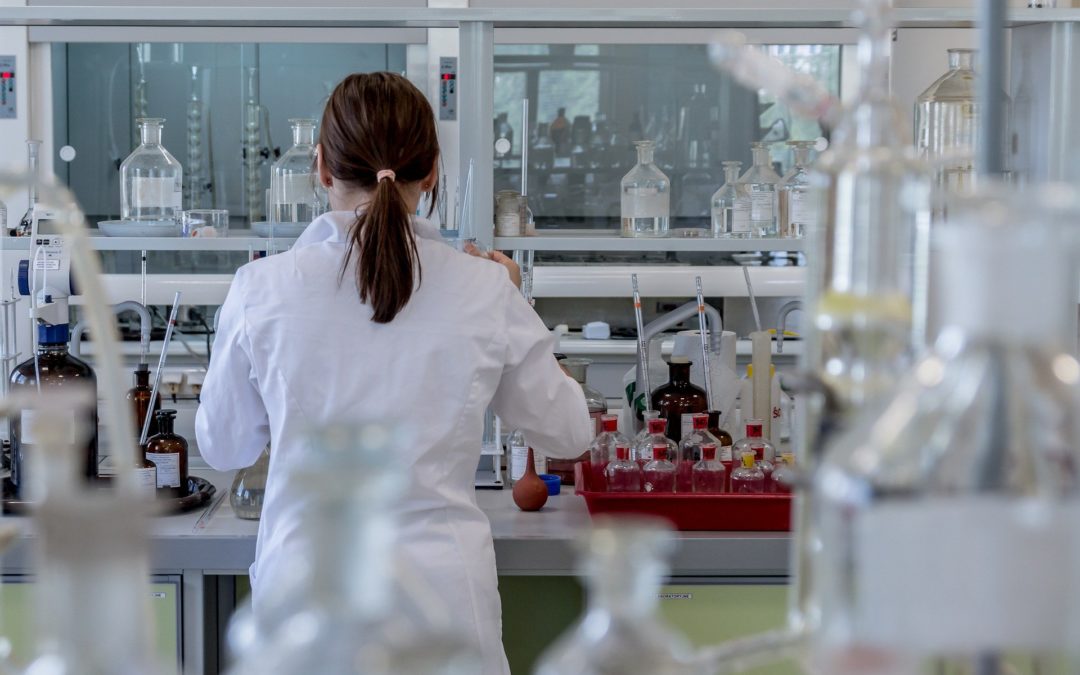An important part of cleanroom design is the choosing the best layout to suit your unique application. If your cleanroom has the challenge of needing to meet changing requirements or different levels of cleanliness, air changes, or pressure for different stages of work or to contain hazardous substances, it can be complicated to fit all of your cleanroom needs in one design.
The solution to this problem is to segment your cleanroom design. Segmented cleanrooms are commonly used in medical applications that require separate spaces for different products or processes to ensure the safety of employees and their work. Let’s explore segmented cleanrooms and their uses, and how their attributes can go beyond necessity in medical cleanrooms.
What Are Segmented Cleanrooms?
Segmented cleanrooms embrace different requirements and cleanroom classifications within a single cleanroom design. To do this, separate spaces are created within the cleanroom and modified to match the necessary requirements. Depending on the needs of the facility, this could mean a cascading pressure system utilizing a negative pressure room and higher pressure ante room; separate areas that meet different classifications, such as for manufacturing vs. packaging, treatment vs. isolation and quarantine, etc.; or any other separate-but-linked purposes your application requires.
Even when segmenting your cleanroom design isn’t required by your industry-specific standards or cleanroom classification, segmentation can offer added benefits like energy efficiency and cost savings. Rather than running the entire cleanroom at the lowest possible classification, a segmented cleanroom makes use of its systems where they’re most needed. This saves energy from powering FFUs and the cleanroom HVAC system, and lessens the strain on expensive HEPA filters. Also, there may be areas in the cleanroom where specialized products, like ESD-safe or classification-compliant materials, can be limited. By restricting use of those extra materials and energy costs to the segment where they’re being used, you’ll save money in your cleanroom design, build, and daily operational costs.
What Medical Applications Benefit from Segmented Cleanrooms?
Segmented cleanrooms are useful in medical applications where different requirements are necessary, particularly in medical device cleanrooms, pharmaceutical cleanrooms, and medical research cleanrooms.
Medical Device Cleanrooms
Medical device cleanrooms are governed by different requirements depending on the stage of production; for example, between manufacturing and packaging. Most medical device manufacturing cleanrooms are required to comply with ISO 14644-1 Class 5-7, while medical device packaging is regulated by Class 7-8 standards. Also, while both phases are confronted with risks due to electrostatic discharge, it is most important to control static in the packaging phase, requiring more safeguards to dispel or conduct charges away from devices using ESD-safe equipment and materials.
A segmented medical device cleanroom design could accommodate all of these requirements, by separating classifications within the same facility. Rather than running the entire space at the lowest possible classification, a segmented cleanroom would save significant energy costs, and be able to more efficiently prioritize operations according to each phase of medical device assembly.
Pharmaceutical Cleanrooms
Many pharmaceutical cleanrooms are designed using cascading pressure rooms with different pressure levels. In this system, each segment has a higher or lower pressure and a specific use to help protect contaminants from leaving one space and transferring to another where they could reduce the effectiveness of compounds, nullify test results, or even endanger human or animal life.
For example, the compounding area in a pharmaceutical cleanroom has different classification requirements and even a different pressure than the ante room attached to it. The purpose of the ante room is to allow the pressure difference to exist, and create a step down for employees to prepare before entering or after exiting the stringent segment. Segmented cleanrooms allow a single pharmaceutical cleanroom to house separate classifications in order to work with hazardous compounds safely and efficiently.
Medical Research Cleanrooms
Medical research cleanrooms may require an adjacent space for biosafe procedures or to house a negative pressure room. If the work involves sensitive or hazardous substances, a more rigorous classification and pressure will be required to isolate the work from external contamination or restrict contaminants from exiting the cleanroom. Segmented cleanrooms are used to allow these processes to occur within the same facility. An intuitive cleanroom design helps researchers focus on their work and feel safe within their environment.
Interested in a unique cleanroom layout for your application? Get in touch with Angstrom Technology! Whether you want to create a segmented pharmaceutical cleanroom or upgrade your cleanroom classification, our experts can help you design, build, and install the ideal cleanroom for you. Reach out to us online today for a free quote.


